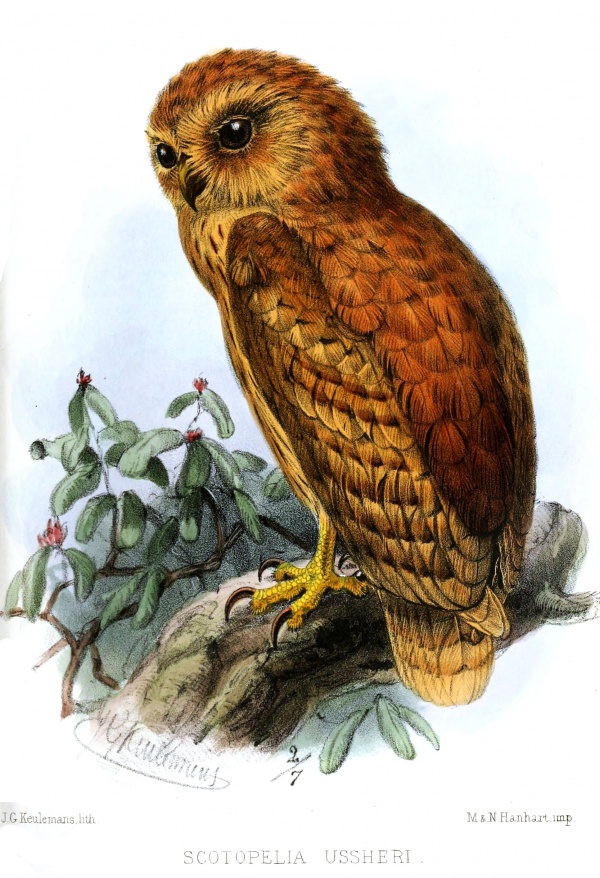Facts About Rufous fishing owl
The Rufous Fishing Owl, also known as the Rufous-backed Fishing-Owl or Ussher's Fishing Owl, is a captivating species from the Strigidae family. This large owl is distinguished by its absence of ear tufts, dark eyes, and a striking pale cinnamon facial disc and underparts. Measuring between 46 to 51 cm in length, it features a rufous mantle and back, white-spotted scapulars, and barred flight feathers. Its call is a low, deep, moaning hoot, and it often duets with its mate.
Native to West Africa, the Rufous Fishing Owl is found in countries such as Ivory Coast, Ghana, Guinea, Liberia, and Sierra Leone. It thrives in subtropical or tropical moist lowland forests and mangrove forests. Unfortunately, habitat loss is a significant threat to its survival. The Rufous Fishing Owl's diet consists mainly of fish, with catfish frequently present in its stomach contents, and it also preys on freshwater crabs. Breeding occurs in September and October, with young owls transitioning to adult plumage approximately six months after fledging. Typically, only one chick is raised per brood. While primarily nocturnal, these owls are occasionally active during the day.
Initially classified as endangered, recent studies have demonstrated that the Rufous Fishing Owl is not as rare as previously thought. Consequently, it was reclassified as vulnerable on the 2011 Red List of Threatened Species. English naturalist Richard Bowdler Sharpe first described the species in 1871, and it is one of three species in the genus Scotopelia. The owl is named after Herbert Taylor Ussher, who provided the type specimen used by Sharpe for his description.

 Burkina Faso
Burkina Faso